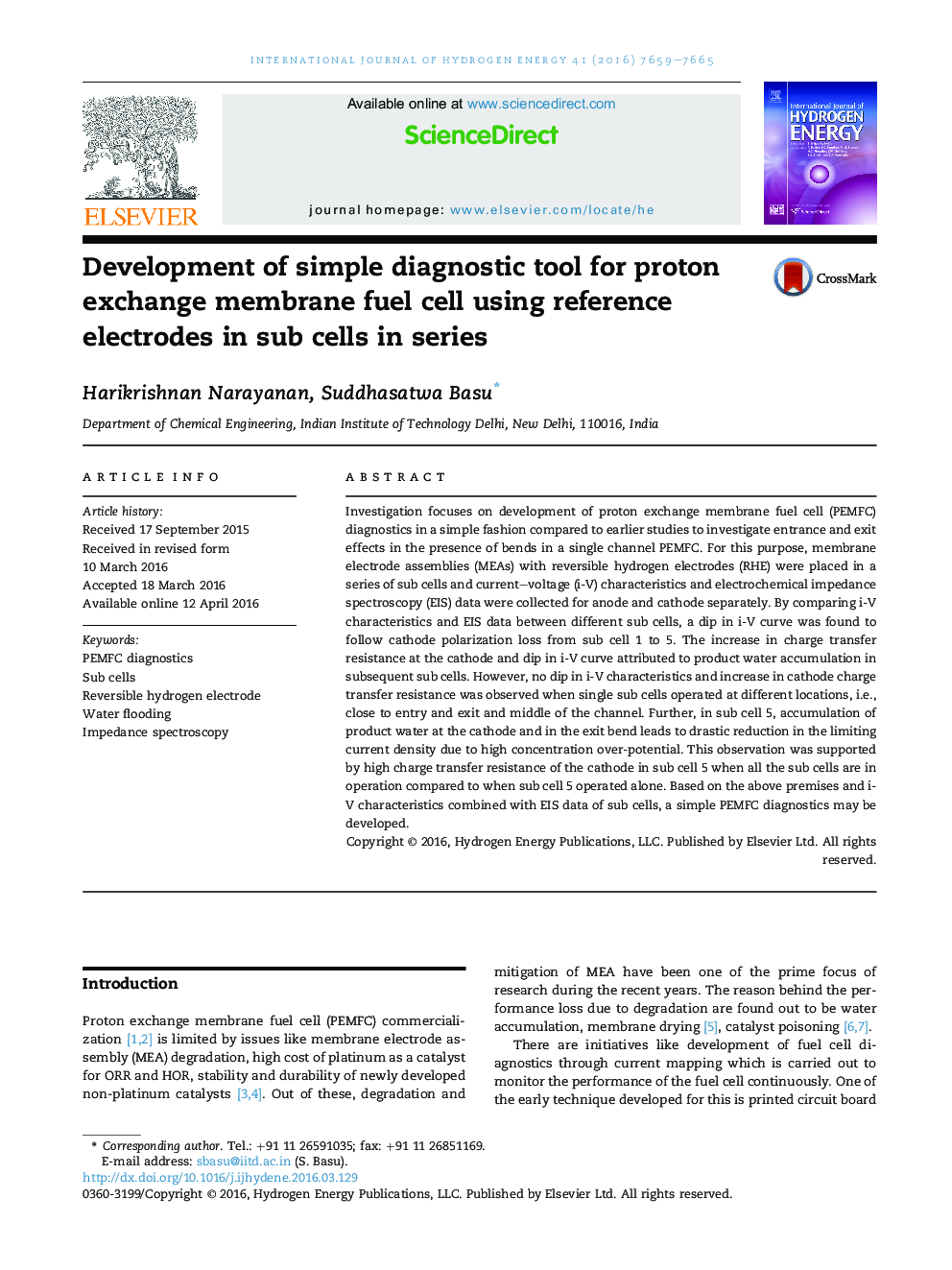| Article ID | Journal | Published Year | Pages | File Type |
|---|---|---|---|---|
| 1268723 | International Journal of Hydrogen Energy | 2016 | 7 Pages |
•PEMFC diagnostics developed to study entrance and exit effect and water flooding.•Bend at the channel entrance enhances the cell performance due to circulating flow.•Reason for cathode polarization losses in sub cells attributed to water flooding.•Water flooding decreases with increase in current density due to convective flow.•Sub cell with RHE gives i-V and EIS signatures replicating PEMFC stack diagnostics.
Investigation focuses on development of proton exchange membrane fuel cell (PEMFC) diagnostics in a simple fashion compared to earlier studies to investigate entrance and exit effects in the presence of bends in a single channel PEMFC. For this purpose, membrane electrode assemblies (MEAs) with reversible hydrogen electrodes (RHE) were placed in a series of sub cells and current–voltage (i-V) characteristics and electrochemical impedance spectroscopy (EIS) data were collected for anode and cathode separately. By comparing i-V characteristics and EIS data between different sub cells, a dip in i-V curve was found to follow cathode polarization loss from sub cell 1 to 5. The increase in charge transfer resistance at the cathode and dip in i-V curve attributed to product water accumulation in subsequent sub cells. However, no dip in i-V characteristics and increase in cathode charge transfer resistance was observed when single sub cells operated at different locations, i.e., close to entry and exit and middle of the channel. Further, in sub cell 5, accumulation of product water at the cathode and in the exit bend leads to drastic reduction in the limiting current density due to high concentration over-potential. This observation was supported by high charge transfer resistance of the cathode in sub cell 5 when all the sub cells are in operation compared to when sub cell 5 operated alone. Based on the above premises and i-V characteristics combined with EIS data of sub cells, a simple PEMFC diagnostics may be developed.
Graphical abstractFigure optionsDownload full-size imageDownload as PowerPoint slide
